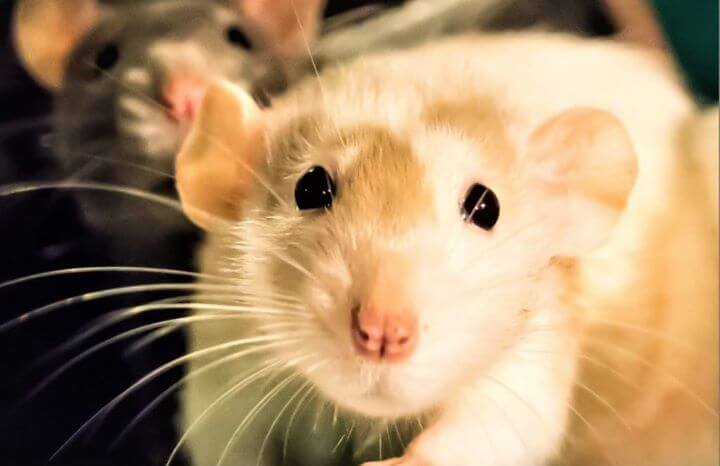Last updated on August 8th, 2024 at 09:22 am
Pornography addiction causes sexual disorders that involve alteration in sexual desire.
Hypersexuality and Hyposexuality are the two common sex-related disorders. Hypoactivity or Hypoactive Sexual Disorder (HSDD) is considered to happen because of low to zero desire for sexual desire, activity and fantasy. Drug abuse or medical conditions happen to be the main reasons (except organic sexual dysfunctions). Moreover, pornography consumption is responsible for pornographic romance.
Pornography Causes Sexual Dysfunction
This is my third and the last article about pornography that I wanted to study and let people know about its adverse effects on our social, private, and neurological settings.
Just out of inquisitiveness I had to spend a couple of months collecting and go through some of the ground-breaking and pioneering research, experiments and studies in order to produce these three pieces. The one leveled, Pornographic Society: Its Socio-Cultural Costs; the one Pornographic Brain: The Costs that Brain Pays Because Of Pornography and last Pornography And Romance: Costs that Manhood Pays.
The frequency of pornography consumption has been shown to predict various negative outcome measures in humans.
A representative Swedish study on adolescent boys that daily consumption of pornography showed more interest in deviant and illegal types of pornography and more frequently reported the wish to actualize what was seen in real life.1
Compulsive sexual Behaviour or Hypersexuality
In the article Is Internet Pornography Causing Sexual Dysfunctions? A Review with Clinical Reports, the authors write, “Hypoactivity is a concomitant decrease in reward sensitivity to normally salient stimuli, such as partnered sex.
This decrease is also behind tolerance and has been implicated in both substance and behavioural addictions, including other types of Internet addictions. The fact that self-selected pornography video is more arousing than other pornography may contribute to habituation or tolerance. For example, men who viewed a sexual film rather than a neutral film later showed less response to sexual images, a possible indication of habituation”. Habituation means the declining level of dopamine.2
Cambridge University researchers Valerie Voon and colleagues in their fMRI scanning found that “Compared to healthy volunteers, CSB (Compulsive Sexual Behaviour) subjects had a greater sexual desire or wanting to explicit cues and had greater liking scores to erotic cues, meaning there is no link between ‘wanting’, and ‘liking’. Thus Compulsive Sexual Behaviour subjects also had greater deficiencies of sexual arousal and erectile difficulties in intimate relationships but not with sexually explicit materials.3
The 2016 survey of 434 men who viewed Internet pornography at least once in the last three months reported that problematic use was associated with higher levels of reusability, yet lower sexual satisfaction and poorer erectile function.
Sexual desire and erectile function in “hypersexuals” and compulsive Internet pornography users reported associations between measures of hypersexuality and reduced desire for partnered sex and sexual difficulties. In partnerships, a decrease in sexual satisfaction and a tendency to adopt pornographic scripts have been associated with frequent Internet pornography consumption.1 Sex can become routine for a lot of couples, and men often see porn as a way to add some spice to the routine. But when men turn to porn for variety and escape, they don’t realize that they’re actually putting their sexual and emotional health at risk.4
German researcher Simone Kühn mentions, “That the frequent brain activation caused by pornography exposure might lead to wearing and downregulation of the underlying brain structure, as well as function, and a higher need for external stimulation of the reward system and a tendency to search for novel and more extreme sexual material. This hypothesized self-perpetuating process could be interpreted in light of proposed mechanisms in drug addiction where individuals with lower striatal dopamine receptor availability are assumed to medicate themselves with the drug.
Individuals with lower striatum volume may need more external stimulation to experience pleasure and might, therefore, experience pornography consumption as more rewarding.1
Pornography and Romance: Erectile Dysfunction (ED)
The correlation found between the frequency of Internet pornography use in the last year and ED (erectile dysfunction) rates in sexually active men from Norway, Portugal and Croatia, high prevalence of ED in men 40 and under exists, and indeed found ED and low sexual desire rates as high as 31% and 37%, respectively. 27% of 81% of respondents on a study had Erectile Dysfunction (ED). The investigators found that ED was the lowest in the 85% of subjects who preferred sex without pornography, while the incidences seen rose to 31% and were highest among the men who preferred masturbation with pornography. However, there is no significant correlation between sexual dysfunction among women.5
ED among Swiss men is 30% aged 18–24 as of 2012, 1 in 40 patients in Italy seeking medical helps under 40 has ED and its 10% higher than men of over 40 as per 2013, 53.5% of male adolescents in Canada reported sexual problems in 2014, Erectile dysfunction was the most common (26%), followed by low sexual desire (24%), and problems with orgasm (11%).
Sexual problems in adolescents were assessed in a study in 2014 (16–21 years) in five waves over a two-year period. For males, persistent problems were low sexual satisfaction (47.9%), low desire (46.2%), and problems in erectile function (45.3%). Rates of psychogenic ED increased more than organic ED, while rates of unclassified ED remained relatively stable. A 2014 cross-sectional study of active duty, relatively healthy, male military personnel aged 21–40 employing the five-item found an overall ED rate of 33.2%. , and that only 1.64% of those with ED had sought prescriptions.2
Data revealed that the increased sexual functioning problems were associated with “sexual anxiety” and “male genital self-image”.
A 2015 “Brief Communication” reported ED rates as high as 31% in sexually active men and low sexual desire rates as high as 37%. Finally, another 2015 study on men (mean age approximately 36), reported that ED accompanied by a low desire for partnered sex is now a common observation in clinical practice among men seeking help for their excessive sexual behaviour, who frequently “use pornography and masturbate”.2
Yes, Pornography not only gives us quick and bigger orgasms, but fuelled by pornographic fantasy people are responsible for committing social ill – as we have seen in the very first article-.e.g. forced sex, rapes, deviant forms of sex, incest sex, sadomasochistic sexual pleasure, increasing voluntary sex trade, domestic violence, premature sexual contact; neurological addiction, hypersexuality, compulsive sexual behaviour and lower sexual performance. The inability to maintain a penile erection is known as Erectile Dysfunction (ED), delayed ejaculation (DE) and rapid climax are signs of problematic sex.
ED can be characterised as, having trouble in getting an erection, having trouble maintaining an erection, and having reduced sexual desire.
“Addiction researchers suggest two kinds of ED: a) Psychogenic ED, b) Organic ED. Psychogenic ED has been related to psychological factors, such as, depression, stress, generalised anxiety, or performance anxiety during sex; and Organic ED has been attributed to physical conditions, such as neurological, hormonal, anatomical, or pharmacologic side effects”.6
Traditionally, Erectile Dysfunction has been counted as an age-related problem, but studies investigating the underlying factors of Erectile Dysfunction in men under 40 often failed to relate common factors of Erectile Dysfunction in older persons, e.g., smoking, alcoholism, obesity, stationary life-style, hyper-tensions, cardiovascular disease, and hyperlipidemia. For men under 40, the most common diagnosis is psychogenic Erectile Dysfunction, and an estimated 15%-20% of cases are organic origin”.7
But to understand how sexual novelty, tolerance, hypersexuality, and hypoactivity are responsible for Erectile Dysfunction in the play we must understand the role that the brain plays in the scenario of sex.
It all starts in the reward system/centre of the brain. Sexual desires are a combination of various neural mechanisms.
Different areas of the brain control different desires and activated in different time sexual desires. The commonly known are the amygdala, hippocampus, and striatum and cingulate gyrus. “There is common agreement that the neural substrates of addiction consist of brain areas that are part of the reward network such as midbrain dopamine neurons, the striatum, and the prefrontal cortex. The striatum is assumed to be involved in habit formation when drug use progresses towards compulsive behaviour. The ventral striatum in particular has been shown to be involved in cue-reactivity processing of various drugs of abuse, but also in the processing of novelty.1
Pornography Changes Pair-bonding Mechanism
Of the 100 billion neurons in the brain, neurotransmitters send chemical signals between neurons.
Dopamine is one of the neurotransmitters which helps the follow of messages to the front brain. The release of dopamine makes us feel good and it expects us to repeat the same or something new as tolerance or habituation is grown. One’s response to natural rewards like sex and food is regulated by dopamine. Thus dopamine plays a crucial path in the sexual arousal and erection of the penis.

The Coolidge Effect helps better understanding. What will happen if you drop a male rat into a cage with a female partner? At first, there would be a frenzy of copulation, and then the male rat partner gets bored and tired of lovemaking, progressively. Because the male partner has already had enough of it, and will not be able to make love to his female partner ever she wanted it.
But the ambience and mood of the male rat change as soon as the existing female partner is replaced with a fresh one into the cage. His sexual desire is revived and he will gallantly struggle to fertilise her. Scientists say the struggle of the male rat can go on until he is finished. Research says, ‘When scientists injected pair-bonding animals on amphetamine (artificial stimuli), the naturally monogamous animals no longer formed a preference for one partner (they sought novel partners).
The artificial stimulation hijacks their pair-bonding mechanism leaving them just like regular promiscuous animals, in which the brain circuit for the lasting bond is absent.8
An Australian researcher found when they displayed the same explicit videos repeatedly to the subjects and revealed the decreased libido. But their penises sprang to attention once existing videos are removed and added new ones.9

A tolerance or habituation (partner or pornographic genre), analogous to tolerance for a drug, can develop in happy lovers as they get used to each other.
Dopamine likes novelty. When monogamous mates develop a tolerance for each other and lose the romantic high they once had, the change may be a sign, not that either of them is inadequate or boring, but that their plastic brains have so well adapted to each other that it’s harder for them to get the same buzz they once got from each other.10 Kinsey Institute research subjects who regularly view pornography showed little erectile responsiveness in the lab and reported a need for novelty and variety. The research found that the greater desire for hard-core themes is correlated with more pornography views indicating the declining sexual responsiveness.11
Sexual satisfaction with partners, as measured by affection, physical appearance, sexual curiosity, and sexual performance was inversely related to pornography use.6
Pornography Creates Dissatisfaction with Partners
A man who masturbates (on porn) frequently can soon develop erection problems when he’s with his partner.
Add porn to the mix, and he can become unable to have sex and then start allowing his fantasies to cloud his judgment. He can, unwittingly or not, start comparing you to the women he’s viewing. Do you have the body of a porn star? (Who would want enormous breast implants?).4
Aside from leading to sexual dysfunction, porn can make men and women feel totally inadequate. The bodies on view are gleaming and perfectly toned. There’s seemingly no mess, no muss, no wet spots on the sheets afterwards. A man can pump and pump and pump, and the woman receives him with (alleged) ecstasy. She has no problem swallowing anything. She encourages him to act out in ways that you or your partner might find out of control or offensive. He has no problem sustaining an erection. They both have an orgasm in perfect synchronicity.
But the vast majority of this is fake or completely unviable. Porn sets you up to be disappointed no matter what.
Adults who have had decent sexual experiences with loving sexual partners will be able to laugh off the moans and groans and pneumatically enhanced body parts because they realize how disconnected porn is from reality. What’s dangerous is that those with less sexual experience might not. When they watch, they’re dissociating from reality. Because porn implants a certain idealized notion of what sex is “supposed to be,” it can create unrealistic expectations. These can be very hurtful for anyone who doesn’t manage to measure up (as if you’d want to!).
Noted bestselling author Norman Doidge says, “Young men who surf porn are tremendously fearful of impotence, or “erectile dysfunction” The penis works fine when they use pornography.
It rarely occurs to them that there may be a relationship between the pornography they are consuming and their impotence. (A few men, however, tellingly described their hours at computer porn sites as time spent “masturbating my brains out.”)10 ED starts in peoples’ head, not on their penises. Harry Fisch says, ‘Some of my patients say that they’re only trying to keep their penises healthy by frequently watching porn and masturbating to it. Yes, regular ejaculation is needed to keep the blood flow steady so a penis can function properly.4
A young man describes his predicament in the NoFap forum:
(Age 18) Before starting porn at 15 I was EXTREMELY horny and would chase anything on 2 legs. I made out with girls and got insane boners. After porn ruined me, I was completely disinterested in girls and could never maintain an erection. At my young age, I knew there was something definitely wrong with me because I’m supposed to be women-crazy like I used to be before porn. At 17 I began my reboot. Yesterday I successfully had sex with no ED drugs and my boner was amazing.
Overload of Dopamine by Watching Porn Can Lead to Brain Harm
Because of the overload of dopamine that is released by watching porn, excess of it causes some harm to the brain.
The needed level of dopamine is obtained only one watches porn to get arousal. Because of habituation or tolerance with the same type of porn, he no longer feels sensitised or gets arousal. Eventually, the users have to search for harder, more deviant (incest, bestiality, the unusually hardcore scene with bigger breast, new scripts, bigger penises that seems to punish hard the female partners) scenes to get aroused which ultimately lead to Erectile Dysfunction if expected level of dopamine is failed to produce in the reward centre on the brain.
Dopamine shoots up when something is better than expected (positive prediction error: prediction and change our behaviour. Specifically, if the reward is better than predicted which is what we all want)12 (violates expectations), but drops when expectations are not met (negative prediction error: If the reward is worse than predicted). With sex, with everyday partners, wives it’s nearly impossible to match internet porn’s level of surprise, variety and novelty which support Simone Kühn’s finding that “pornography constitutes a prewired, naturally rewarding stimulus and that high levels of exposure result in a downregulation or habituation of the neural response in the reward network”.
Pornography forms its own universe in the viewers’ psyche and head.
Sex and sexual pleasure take it to form in this universe without any emotional connection of lover or beloved. Seemingly it tends to give us a real look of sex that is being performed on the screen, but in reality, it is a false depiction of overstated pleasure being performed by the performers and fake everything they perform. They are utter the dialogue that they have just read from a script by a pornographic scriptwriter and doing what their directors and producers told them to do.
Admittedly, something that is meant to stimulate and give arousal to men (and women) sexually can, in fact, put an end to their overall libido and sexual performance over time.
Gary Wilson relates Erectile Dysfunction with pornography following ways. Habituation/tolerance and lower level of dopamine can be characterised as
a) Earlier genres of porn are no longer exciting.
b) Uncharacteristic fetishes develop.
c) Porn use is more sexually exciting than a partner.
d) The sensitivity of the penis decreases.
e) Sexual arousal with sexual partners declines.
f) Erections fade when attempting penetration or shortly thereafter.
g) Penetrative sex is not stimulating.
h) Porn fantasy is necessary to maintain an erection or interest with a partner.
When a man chronically watches porn and gets off on it, or watches porn with his hands on himself so he can masturbate at the same time (which is what usually happens), the sensory stimulation he gets from the virtual world makes it much more difficult for him to get aroused, stay aroused, and be happily aroused by the real, live woman in his life.
Pornography Causes Marriage Dysfunctional
A married man’s dilemma is self-evidential in the letter of the victim of problematic sex to psychiatrist Harry Fisch:
Dear Dr Fisch: I Can’t Have Sex Unless the Porn Is On.
Dear Dr Fisch,
I’ve been married to my wife, Sonia, for more than seventeen years and I love her very much. We have had a good marriage, but the problem is I know I’m addicted to porn. I’m really scared that Sonia is going to leave me. I can’t say I blame her. For the last couple of years, I can’t have sex with her unless the porn is on. She hates it but she puts up with it because she loves me. But she’s finally reached the point where she can’t stand it anymore, and she’s about to pack her stuff and go. I need help. What should I do?
Signed, Need Porn Rehab
In other words, his frequent, porn-fuelled masturbation leads to sexual dysfunction with a partner. If he can only have an orgasm when watching porn, and if he becomes accustomed to having orgasms only in a certain way or while watching a certain thing, he’s in trouble—and so are you.
A wife is caught in a hard and rock place–
Dear Dr Fisch,
My husband and I have only been married for a year, but our sex life isn’t what it used to be when we were engaged and when we first got married. I’m pretty sure it’s him who’s got the problem. Every time we have sex, I can have an orgasm pretty quickly, but it takes him about thirty minutes to have one, too.
I know my husband sometimes watches a lot of porn, so is that the reason why he takes so long? I mean, we really love each other and I know he wants me to be happy with our sex life. He tells me the porn is harmless and he likes to watch it because it’s “fun.” What should I do?
Conversations with the subjects from the bathhouses, STD clinics, bars and so on, where explicit sexual materials are present, seemed to have lower responsivity to “vanilla sex” erotica and an increased need for novelty and variation, in some cases combined with a need for very specific types of stimuli in order to get aroused.11
Of those who consumed Internet pornography more than once a week, 16% reported low sexual desire, compared with 0% in non-consumers (and 6% for those who consumed less than once a week).
Another 2015 study of men (average age 41.5) seeking treatment for hypersexuality, who masturbated (“typically with very frequent pornography use”) seven or more hours per week, found that 71% had sexual dysfunctions, with 33% reporting difficulty orgasming. Anxiety about sexual performance may impel further reliance on pornography as a sexual outlet. In a 2014 functional magnetic resonance imaging (fMRI) study by Valerie Voon, of the 19 compulsive Internet pornography user, 25% of subjects were reported to have ‘diminishes libido’ or ‘erectile function’ in a physical relationship with women, but not regarding explicit materials”.3
A number of literature review studies by researchers found pornography to have a correlation with arousal, attraction, and sexual performance problems, including difficulty orgasming, diminished libido or erectile function, negative effects on partnered sex, decreased enjoyment of sexual intimacy, less sexual and relationship satisfaction, a preference for using Internet pornography to achieve and maintain arousal over having sex with a partner, and greater brain activation in response to pornography in those reporting less desire for sex with partners”.2 Garry Wilson’s book Your Brain on Porn gives an account of a former pornography addict who has started recovering:
(Age 50) Over the years, I suggested to my wife various activities straight out of porn stories. She was okay with some of them, but it never satisfied at all. Although we had a decent sex life relative to most people our age, I was always comparing the porn scenarios with my real life and real wife and feeling dissatisfied. Now, things are shifting. During intercourse last night, I felt suddenly very intimate, almost scarily intimate, deep contact I have never experienced before. It felt kind of shocking to me. It was wonderful in a way I can’t describe, but I am in a kind of awe over it.
The prevailing justification for pornography in our time appears to be philosophical libertarianism.
Many people regard pornography as a private matter that does not affect others, as long as both the producers and the consumers are consenting adults.
If pressed upon the point that pornography obviously causes harm in some families and marriages and relationships, many people would further respond that such may be true, but besides the point; what is most important is that people have a “right” to it. This response is illogical. No one would argue that tobacco is not a serious public health problem because many smokers, including lifelong smokers, do not die of lung cancer. Likewise, the fact that not everyone becomes dependent upon or addicted to pornography is irrelevant to the fact that pornography causes substantial harm.13
Nick J. Claire Bale, Professor of Sociology, University of Huddersfield UK, write in his article Bodies, Pornography And The Circumscription Of Sexuality: A New Materialist Study Of Young People’s Sexual Practices, “Proliferation and prominence of sex in today’s world reflects a discourse that commodities sex as an acceptable, democratic and renewal route to bodily pleasure. The stereotypical and unimaginative practices often portrayed in some pornography and sexualised media and sexuality, and aggregate bodies into prescriptive formulations of gender and sexuality.”
Nick continues, “They may also consequently reproduce and reinforce misogyny, sexual objectification and neoliberal sexual consumerism, and constrain rather than promote sexual diversity.
In this broader context, our critique of the production and consumption of pornography and other sexual media content is not that it is good for some (consenting adults) and bad for others (children), but that it is one element within a pernicious sexualisation-assemblage of bodies, body parts, money and desires that de-limits what is culturally understood as sexual and contributes to broad sexual grooming. Genitalised pornography is a threat not to moral decency or to childhood innocence, but to all our capacities to enjoy and explore the possibilities of sexualities and becoming-other. Furthermore, this sexualisation is often underpinned not by altruistic efforts to spread sexual pleasure and rights but by a neoliberal marketization of sex.14
Men’s Perception of Sexuality
A daily labourer, who lives in the slum of Muhammadpur in Dhaka, Bangladesh, who watches porn (known as Blue Films or XXX) speaks his expectation out.
The expectation that has been taking root in his brain from the portrayal of pornography can be accessed by millions, thanks to the latest gadgets, in Bangladesh.

If you can continue your game until the girl screams only then you will be treated as a real man.
Have you seen the way the women scream and shout in the movies when the man is having sex with her? I have a friend who works in garments and I think he is a real man because he is physically healthy and sexually very strong. He always wins over his wife. One day he comes to me and says, ‘I have fucked her so hard that she has forgotten the name of her father’. Continuously he has sex with his wife for 30 minutes. I think he is the real male, none of my friends is as strong as him.15
Norman Doidge talks about how dependence on pornography for some couples who use it in order to spice up their time during an intimate moment that, “Viewing pornography initially helped men get more excited during sex but over time has the opposite effect.
Over time, now, instead of using their senses to enjoy being in bed, in the present, with their partners, lovemaking increasingly required them to fantasise that they were part of a porn script. Some gently tried to persuade their lovers to act like porn stars, and they were increasingly interested in “fucking” as opposed to “making love.” Their sexual fantasy lives were increasingly dominated by the scenarios that they had, so to speak, downloaded into their brains, and these new scripts were often more primitive and more violent than their previous sexual fantasies. I got the impression that any sexual creativity these men had was dying and that they were becoming addicted to Internet porn.10
Conclusion
Let us now finish with a remark by American biologist and theoretical neuroscientist Walter J. Freeman, a professor of neuroscience at the University of California Berkeley, “The deepest meaning of sexual experience lies not in pleasure, or even in reproduction, but in the opportunity it affords to surmount the solipsistic (idea that only one’s own mind is sure to exist) gulf, opening the door, so to speak, whether or not one undertakes the work to go through. It is the afterplay, not the foreplay that counts in building trust.”
Hello there,
If you’ve enjoyed reading my articles and found value in my platform, I kindly ask for your support. By buying me a coffee, you’ll be directly contributing to my mission of keeping Probinism ad-free. Your support means the world to me. Every coffee you buy brings me one step closer to achieving that goal.
I am immensely grateful for your support, and we look forward to bringing you even more amazing articles in the future. Thank you for being a part of the Probinism community!
Here’s how you can show your support:
👉 Click the link below to buy us a coffee ☕
Warm regards,
Romzanul Islam
References:
- Brain Structure and Functional Connectivity Associated With Pornography Consumption The Brain on Porn. Kühn, Simone and Gallinat, Jürgen. 2014, JAMA Psychiatry. ↩ ↩ ↩ ↩
- Is Internet Pornography Causing Sexual Dysfunctions? A Review with Clinical Reports: Brian, Y. Park, et al. 2016, Behaviour Science, Vol. 17. ↩ ↩ ↩ ↩
- Neural Correlates of Sexual Cue Reactivity in Individuals With and without Compulsive sexual Behaviour. Valerie Voon, Thomas B. Mole, Paula Banca, Laura Porter, Laurel Morris, Simon Mitchell, Tatyana R. Lapa, Judy Karr, Neil A. Harrison, Marc N. Potenza and Michael Irvine. 7, 2014, Vol. 9. ↩ ↩
- Fisch, Harry MD and Moline, H Karen. The New Naked: the ultimate sex education for grown-ups ↩ ↩ ↩
- Osterweil, Neil. Porn Use Linked to Erectile Dysfunction. [Online] 05 14, 2017. [Cited: 8 10, 2018.] https://www.medscape.com/viewarticle/879982#vp_2. ↩
- Is Internet Pornography Causing Sexual Dysfunctions? A Review with Clinical Report. Park, Brian Y, et al ↩ ↩
- Prevalence and trends in obesity among us adults. Flegal, K. M., et al. s.l. : JAMA, 1999–2008. ↩
- Wilson, Gary. Your Brain On Porn: internet pornography and the emerging science of addiction. 2014. ↩
- Habituation and dishabituation of female sexual arousal, Behaviour research and therapy. Over, Meuwissen and R. 1999, Behaviour research and therapy. ↩
- Norman Doidge, M.D. The Brain That Changes Itself. pp. page 79-80. ↩ ↩ ↩
- The dual control model: the role of sexual inhibition & excitation in sexual arousal and behaviour. Bancroft, Erick Janssen and John. s.l. : Indiana University Press., 2006, The Psychophysiology of Sex. ↩ ↩
- Dopamine reward prediction error coding. Wolfram Schultz, MD, FRS. Dialogues Clin Neurosci. 2016;18:23-32. ↩
- The Social Costs Of Pornography: A Statement Of Findings And Recommendations. University, The Witherspoon. 2010. ↩
- Bodies, Pornography And The Circumscription Of Sexuality: A New Materialist Study Of Young People’s Sexual Practices. Bale, Nick J Fox and Clare. 2018, Vol. 21. ↩
- Pornography, Pleasure, Gender and Sex Education in Bangladesh. Akram, Sabina Faiz Rashid and Owasim. 2014, IDS Sexuality and Development Programme. ↩






